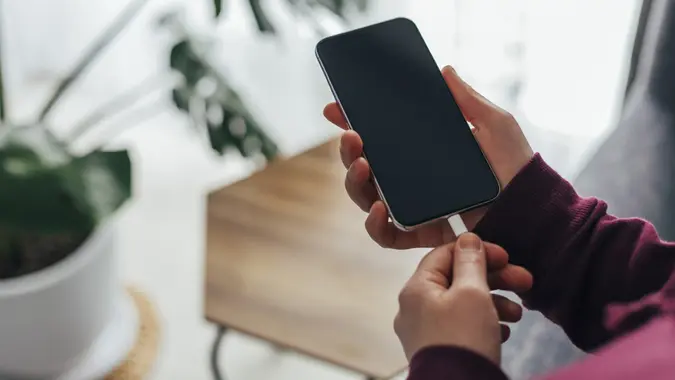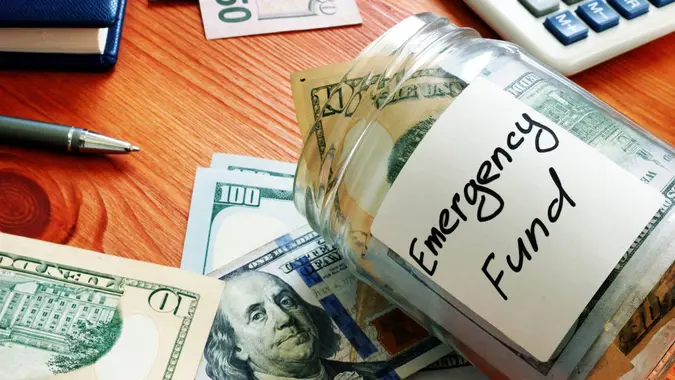3 Questions To Ask Yourself Before Using Your Emergency Fund, According to Rachel Cruze

Commitment to Our Readers
GOBankingRates' editorial team is committed to bringing you unbiased reviews and information. We use data-driven methodologies to evaluate financial products and services - our reviews and ratings are not influenced by advertisers. You can read more about our editorial guidelines and our products and services review methodology.

20 Years
Helping You Live Richer

Reviewed
by Experts

Trusted by
Millions of Readers
Money pro Rachel Cruze was raised on financial caution. The daughter of finance expert Dave Ramsey, she went on to become a certified financial coach and help other people manage their money.
In a recent Instagram post, she shared tips for managing your emergency fund, including when to use it. As a self-described free spirit with a “pretty strong tendency toward spending,” Cruze understands that saving can be challenging — to say nothing of resisting withdrawals.
Read More: 5 Unnecessary Bills You Should Stop Paying in 2024
Here are three essential questions she recommends asking yourself before dipping into your emergency fund.
How Much Should Be in Your Emergency Fund?
Cruze recommends having three to six months’ worth of expenses in your emergency fund. Your target will depend on the stability of your income and whether anyone else relies on you for financial support.
For single people with no financial dependents and a steady income, Cruze recommends saving three months of expenses. But if your income is unpredictable or your paycheck supports multiple people, having enough to cover six months is safer.
According to CEIC Data, the average monthly income in the U.S. is $4,865 in 2024. That puts the typical savings target around $14,595 for a single person and $29,190 for someone with higher savings needs.
Where To Keep Your Emergency Fund
Cruze recommends a high-yield savings or money market account for your emergency fund. These types of accounts typically earn more interest than a traditional savings account, and that extra money can add a buffer to your savings.
When Can You Use Your Emergency Savings?
Cruze understands the temptation of pulling money from your emergency fund. However, she wants to challenge savers with these three questions before making a withdrawal from their savings accounts.
‘Is It Unexpected?’
Your emergency fund is for expenses you can’t anticipate. For everything else, there’s your budget.
Ramsey Solutions recommends saving money for significant expenses that arise irregularly but predictably. Examples include car insurance premiums, property taxes and even holiday gifts.
If you can predict an expense, divide it into monthly installments and add it to your budget. Withdraw the money from your checking account so you don’t spend it and transfer it back when you need to pay the bill.
‘Is It Necessary?’
Something isn’t an emergency if you can safely ignore it.
Before you use your emergency fund, ask yourself what will happen if you don’t. If your car needs repairs and you can’t get to work without it, dip into your savings. It’s not an emergency if the car still runs but the radio is crackly.
‘Is It Urgent?’
By definition, emergencies are both necessary and urgent. If you need something that can wait, it’s not worth dipping into your emergency fund.
Instead, start putting money aside and earmark it for that need. A few banks even have “buckets” that let you organize your savings so you know how much you’ve set aside for particular goals. And of course, there’s always the classic spreadsheet method for tracking your savings.
If you answer “yes” to all three questions, you can withdraw from your emergency fund guilt-free.
 Written by
Written by  Edited by
Edited by 

























